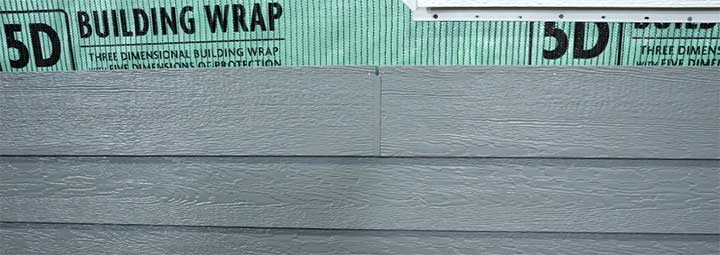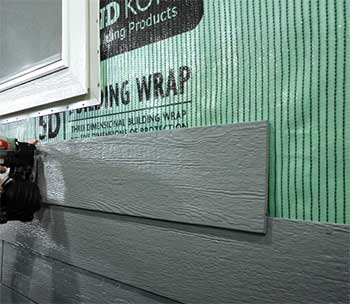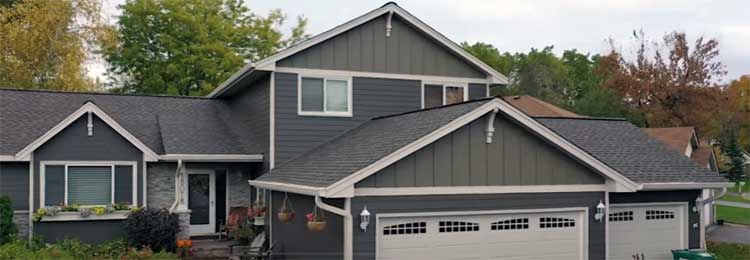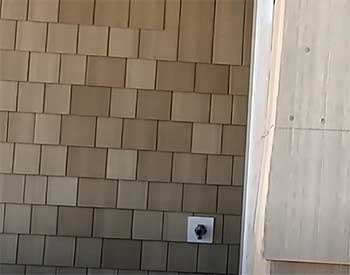I’ve been through my fair share of home improvement projects, and let me tell you, choosing the right siding can make or break your home’s vibe. After researching and living with Diamond Kote siding, I’m convinced it’s a game-changer.
It’s durable, stylish, and low-maintenance, blending the charm of wood with modern toughness. If you’re looking to elevate your home’s exterior without constant upkeep, Diamond Kote is worth every penny.
In this article, I’ll share my experience, break down the pros and cons, compare it to other brands, and offer maintenance tips to keep it pristine.
My Experience With Diamond Kote Siding

When my wife and I decided to renovate our 20-year-old home in the Midwest, we wanted something that screamed “modern farmhouse” but wouldn’t demand constant attention. Our old vinyl siding was fading, and the neighbor’s dog had left some unsightly scratches.
After weeks of research, we landed on Diamond Kote siding, specifically their RigidStack lap siding in a deep Graphite shade. The decision wasn’t easy—siding is a big investment—but the promise of durability and low maintenance sold us.
The installation process was a breeze, thanks to our contractor’s familiarity with LP SmartSide, the engineered wood base for Diamond Kote. The pre-finished boards arrived in neat four-packs, and I was impressed by how little scuffing there was during transport.
Watching the crew work, I noticed how the boards’ longer lengths (up to 16 feet) meant fewer seams, giving our home a sleek, seamless look. The color was vibrant, with a woodgrain texture that looked like real cedar but felt tougher.
Living with Diamond Kote for two years now, I can say it’s held up beautifully. We’ve had brutal winters, scorching summers, and even a hailstorm that left our neighbor’s vinyl siding pockmarked. Our house? Not a scratch.
The color hasn’t faded, and cleaning is as simple as a quick rinse with the garden hose. The only hiccup was a minor issue with a corner piece that wasn’t sealed properly, but our contractor fixed it under warranty.
Overall, Diamond Kote has given our home a modern edge while saving us from the maintenance headaches of traditional wood.
Pros of Diamond Kote Siding

- Unmatched Durability
Let’s talk about toughness. Diamond Kote is built on LP SmartSide, an engineered wood product treated with a SmartGuard process that makes it a fortress against the elements. Rain, snow, hail, or termites—this siding laughs in their face.
I’ve seen hailstones the size of golf balls bounce off without leaving a mark, which is more than I can say for my neighbor’s vinyl siding. The 30-year no-fade warranty and 5/50-year limited warranty give me peace of mind that this siding will outlast my mortgage.
- Low Maintenance, High Convenience
If you’re like me and dread the thought of scraping and painting every few years, Diamond Kote is your new best friend. Its pre-finished coating, baked on through an oven process, resists dirt, grime, and moisture like a champ.
I’ve only had to hose it down once a year, and it looks as good as the day it was installed. The finish uses ceramic microspheres and industrial-grade pigments, which means no peeling or cracking. You’re not just buying siding; you’re buying time to enjoy your weekends.
- Aesthetic Versatility
Diamond Kote doesn’t skimp on style. Whether you’re going for a rustic board-and-batten look or a sleek, modern lap siding vibe, they’ve got you covered. Their WoodMark collection mimics real cedar so well that guests have asked if we installed actual wood.
With over 20 color palettes designed by experts, picking a shade was fun, not stressful. I went with Graphite for a bold, contemporary look, but their range—from warm neutrals to vibrant blues—lets you customize to your heart’s content.
- Eco-Friendly Credentials
I’m no tree-hugger, but I appreciate that Diamond Kote takes the environment seriously. Their paints are water-borne, cutting down on harmful VOC emissions, and their wood comes from fast-growing, sustainable trees.
The manufacturing process uses the entire log, minimizing waste, and their trucks run on compressed natural gas. Knowing my siding choice isn’t wrecking the planet feels like a small win.
- Energy Efficiency
Here’s a bonus I didn’t expect: Diamond Kote’s high R-value means it insulates better than many other sidings. My energy bills dropped about 15% after installation, especially during our brutal Midwest winters.
The siding’s ability to lock out moisture also keeps my home’s interior cozy and dry, reducing strain on my HVAC system. It’s not just about looks; this stuff helps your wallet too.
Not-So-Good Parts of Diamond Kote Siding
- Higher Upfront Cost

Let’s not sugarcoat it—Diamond Kote isn’t cheap.
I paid about $18 per square foot, including installation, which is pricier than vinyl ($7.50/sq ft) or even fiber cement ($10/sq ft).
For our 2,000-square-foot home, the total cost was around $36,000.
That’s a big pill to swallow, especially if you’re on a tight budget.
But when I crunched the numbers, the long-term savings on maintenance and energy made it feel less like a splurge and more like an investment.
- Installation Precision Matters
Diamond Kote’s durability depends heavily on proper installation. My contractor warned me that cutting corners—literally—can lead to issues like moisture seepage at joints. We had a minor problem with a corner piece that wasn’t sealed correctly, which let some water in during a heavy rain.
It was fixed quickly, but it’s a reminder that you need a skilled installer who follows Diamond Kote’s guidelines to the letter. If your crew isn’t experienced, you might face headaches down the line.
- Limited Local Availability
Finding Diamond Kote in my area wasn’t as easy as I’d hoped. Not every lumberyard carries it, and some contractors I spoke with hadn’t worked with it before. This meant longer lead times for materials and a bit of a hunt to find a supplier.
If you’re in a rural area, you might need to plan ahead or pay extra for shipping. Once we found a supplier, though, the process was smooth, but it’s something to keep in mind.
- Warranty Hassles
The 30-year no-fade warranty sounds great, but I’ve heard from others that claiming it can be a pain. A friend who used Diamond Kote had to jump through hoops to prove fading was uniform across his house before the warranty kicked in.
My experience has been fine so far, but the fine print matters. You’ll need to keep detailed records and photos to make a claim, which can feel like a bureaucratic slog if issues arise.
Maintenance Tips For Diamond Kote Siding
- Annual Cleaning is Key
To keep your Diamond Kote looking sharp, give it a good wash once a year. I use a garden hose with a spray nozzle on a mild setting—nothing too aggressive. For stubborn dirt, a soft-bristle brush and a mix of mild dish soap and water does the trick.
Avoid harsh chemicals like bleach, which can damage the finish. This quick routine keeps the siding’s vibrant color intact and prevents grime buildup.
- Inspect Joints and Seams
Every spring, I take a walk around my house to check the caulk around joints, corners, and windows. Moisture can sneak in if seals degrade, especially in humid climates like mine. If I spot cracks or gaps, I reapply a high-quality elastomeric caulk. It’s a simple fix that prevents bigger issues like water damage.
Your contractor can show you the right caulk to use—don’t just grab the cheapest tube at the hardware store.
- Avoid High-Pressure Washing
I learned the hard way that power washing can be too much for Diamond Kote. Early on, I used a pressure washer on a low setting and noticed some slight scuffing.
Stick to a garden hose or, if you must use a power washer, keep it below 1,500 PSI and use a wide-angle nozzle. The siding’s finish is tough, but it’s not invincible, so treat it with care.
- Check for Damage After Storms
After any big storm, especially hail or high winds, I do a quick inspection. Diamond Kote is hail-resistant up to 1.75-inch stones, but it’s not bulletproof. Look for dents, cracks, or loose boards.
If you spot damage, call your contractor ASAP to assess whether it’s covered under warranty. Catching issues early saves you from costly repairs later.
- Trim Nearby Vegetation
Overhanging branches or vines brushing against your siding can scratch the finish over time. I keep trees and shrubs trimmed back at least a foot from the house.
This also improves airflow, reducing moisture buildup that could lead to mold. It’s a small step, but it keeps your siding looking pristine and extends its life.
Comparing Diamond Kote To Other Siding Brands
When I was picking siding, I compared Diamond Kote to James Hardie, Continental Siding, and NuCedar Siding. Each has its strengths, but let’s see how they measure up head-to-head.
Diamond Kote Vs. James Hardie

- Durability: Diamond Kote’s engineered wood core, treated.. SmartSide, resists rot, termites, and hail up to 1.75 inches. My home’s been through Midwest storms, and it’s unscathed, backed by a 30-year no-fade warranty. James Hardie’s fiber cement is tough, fire-resistant, and lasts 40-50 years, but it’s brittle and can crack under heavy impact.
- Maintenance: Diamond Kote’s pre-finished coating needs just an annual rinse—no painting, no hassle. James Hardie often requires repainting every 7-10 years unless you get their pricier ColorPlus finish, which may still need touch-ups.
- Aesthetics: Diamond Kote’s WoodMark collection offers 20+ vibrant, fade-resistant colors, mimicking cedar perfectly. James Hardie’s smooth or textured options are classic but less bold unless painted onsite.
- Cost: Diamond Kote costs $18/sq ft installed; James Hardie is $10-$12/sq ft but heavier, raising installation costs. Both need skilled installers to avoid issues like moisture seepage.
- Eco-Friendliness: Diamond Kote uses sustainable wood and water-borne paints, minimizing VOCs. James Hardie’s production is energy-intensive with non-recyclable waste.
Diamond Kote Vs. Continental Siding

- Durability: Diamond Kote laughs off hail, rain, and pests with a 5/50-year warranty. Continental’s vinyl siding, lasting 20-40 years, cracks in cold weather and fades in sun-heavy areas.
- Maintenance: Diamond Kote’s baked-on finish requires a yearly hose-down. Continental’s vinyl is low-maintenance too, but its colors fade faster, sometimes needing early replacement.
- Aesthetics: My Graphite Diamond Kote looks sleek and cedar-like. Continental’s vinyl has many colors but looks plasticky up close, lacking depth.
- Cost: Continental’s vinyl is cheaper at $7.50-$9/sq ft, but its shorter lifespan means higher long-term costs. Diamond Kote’s $18/sq ft saves on painting.
- Eco-Friendliness: Diamond Kote’s sustainable wood and eco-conscious production outshine Continental’s petroleum-based vinyl, which has a worse environmental footprint.
Diamond Kote Vs. NuCedar Siding

- Durability: Diamond Kote’s SmartGuard-treated core handles extreme weather and pests, with a 30-year no-fade warranty. NuCedar’s PVC vinyl, lasting 20-40 years, struggles with temperature extremes and fading.
- Maintenance: Diamond Kote needs a simple annual wash. NuCedar’s vinyl is low-maintenance, but its textured surface traps dirt, making cleaning tougher.
- Aesthetics: Diamond Kote’s 20+ colors and woodgrain texture look authentic. NuCedar mimics wood well, but its glossy finish feels less natural.
- Cost: NuCedar’s $8-$11/sq ft is cheaper than Diamond Kote’s $18/sq ft, but less durable. Both require precise installation to prevent warping or leaks.
- Eco-Friendliness: Diamond Kote’s green practices beat NuCedar’s petroleum-heavy vinyl, which isn’t eco-friendly.
Frequently Asked Questions (FAQ)
LP SmartSide is the engineered wood base used for Diamond Kote siding. It’s made of wood strands bonded with resin and treated with SmartGuard for resistance to moisture, pests, and decay. Diamond Kote takes it up a notch with a proprietary pre-finish, using ceramic microspheres and industrial-grade pigments for a scratch-resistant, fade-proof coating. LP SmartSide needs painting or a factory finish like ExpertFinish, which fades faster than Diamond Kote’s 30-year no-fade warranty. Essentially, Diamond Kote is LP SmartSide with a premium, low-maintenance finish.
Diamond Kote siding is built to last 30-50 years, depending on climate, installation quality, and maintenance. Its engineered wood core resists rot, termites, and extreme weather, while the pre-finished coating prevents fading and peeling for up to 30 years, backed by a no-fade warranty. With annual cleaning and proper care, I’ve seen it stay flawless for years. In harsh climates, like coastal areas with high humidity, regular inspections can ensure it hits that 50-year mark.
Avoid traditional wood siding if you want low maintenance—it rots, warps, and needs repainting every 3-5 years. Older vinyl siding from the 80s or 90s can be brittle, prone to cracking, and fades quickly in sun-heavy areas. Some early composite sidings, like Masonite, had issues with swelling and delamination, so steer clear of outdated versions. Always check for modern formulations and warranties—cheap, off-brand sidings often skimp on durability and can cost more in repairs.
Yes, you can power wash Diamond Kote siding, but be gentle. I made the mistake of using too much pressure and scuffed the finish slightly. Stick to a pressure washer under 1,500 PSI with a wide-angle nozzle to avoid damage. For most cleaning, a garden hose and mild soap work fine. If you’re unsure, test a small area first. Regular cleaning keeps the siding’s finish intact, but overdoing it with high pressure can harm its protective coating.
Conclusion: Why Diamond Kote Is My Top Pick
After two years with Diamond Kote siding, I’m still thrilled with my choice. It’s tough, gorgeous, and saves me from endless maintenance chores. The upfront cost stings, but the long-term savings and curb appeal make it a no-brainer.
Whether you’re revamping a dated exterior or building new, Diamond Kote delivers style and durability that’s hard to beat. Trust me, you’ll love coming home to a house that looks this good with so little effort.
